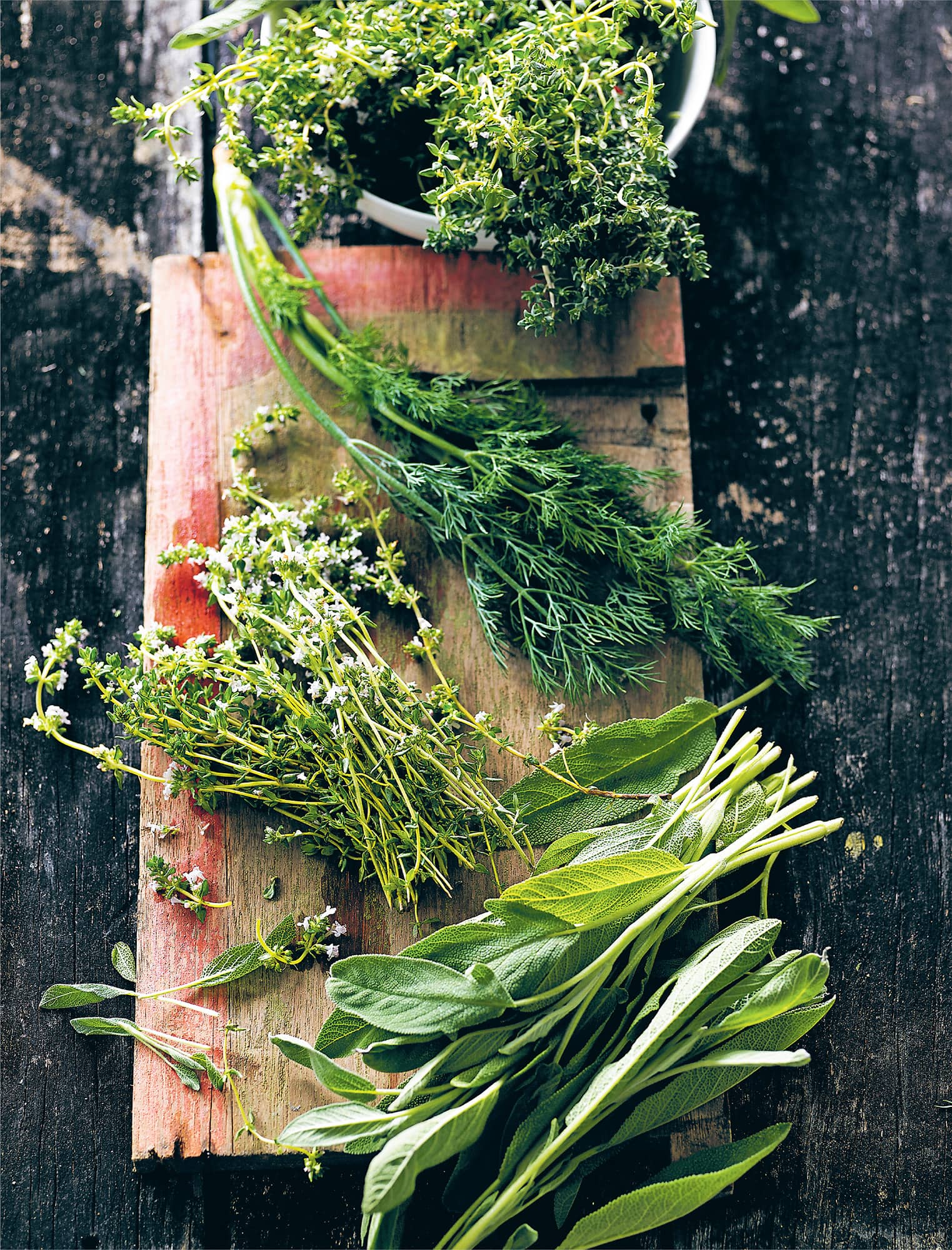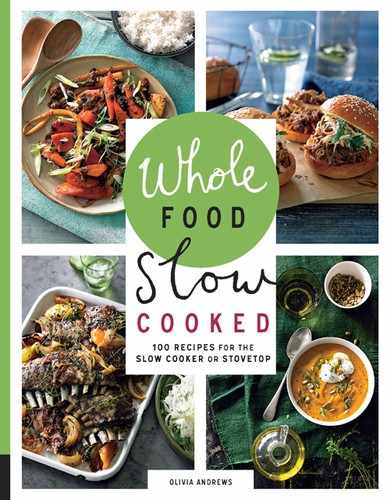INTRODUCTION
As we become increasingly aware of the vital role that a nutritious diet based on whole foods plays in maintaining optimal health, we’re demanding more and more from our everyday meals. We want a way to cook and eat that fulfills all our criteria: tasty, healthy, convenient and comforting.

In warm weather we need look no further than the salad bowl or the crisper drawer of the fridge for an easy and nourishing meal, but when the weather turns cooler, we crave thick soups, hearty stews, pasta sauces and bakes, spicy curries and dals. And then we’re left searching for inspiration … not to mention the hours in our busy days to let time work its magic on such robust fare.
This is where slow cooking really comes into its own. Whether made in a dedicated slow cooker, or simply on the stovetop or in a low oven, many of these dishes virtually cook themselves. Slow cooking whole, unprocessed foods turns out to be the perfect way to make healthy, home-cooked food with maximum flavor and minimum fuss.
To provide the flexibility our busy lifestyles demand, each recipe includes cooking methods for both slow cooker and stovetop or oven, so you can choose how you want to cook. Even better, slow cooking is very forgiving. You don’t need to hover over a meal as it simmers in the slow cooker (or in a low oven), and many models automatically switch to “warm” or have timers – handy if you’re delayed on the way home, or the phone rings just as you come through the door!
What’s more, slow cooking is economical. Because a slow cooker can spend hours cooking when you can’t, you can use cheaper, more flavorful cuts of meat that need lengthy cooking to tenderize them. This means you can take advantage of special offers at the butcher or supermarket. To make shopping and cooking even easier, we’ve given alternative cuts of meat that can be substituted in each recipe, and also included specific cuts in the index, so you can look up dishes to cook with whatever you’ve got.
You will notice that many of the recipes in the book are scattered with freshly chopped herbs before serving, and that sometimes we suggest an accompaniment such as a crunchy gremolata. Stews and braises made in the slow cooker do indeed become meltingly tender, often with a velvety sauce, so you will find that the addition of a little fresh herby crispness, crunch or spice for serving will add contrast and finish the dish perfectly.
For many of us, the time it takes to cook dried beans and legumes is prohibitive, especially during the week. But with a slow cooker, you can cook soaked dried beans from scratch, rather than resorting to the more expensive quick-fix of canned beans, which can also be laden with salt and sugar. Talking of sugar, there’s no need to miss out on a sweet treat either, as these recipes use only unrefined sugars or healthier alternatives such as rice syrup, agave syrup or honey to create comforting puddings and cakes (several of which do double-duty as both dessert and afternoon pick-me-up).
If you’re investing in your first slow cooker, there are a few things to keep in mind. The capacity of slow cookers ranges from modest versions, perfect for small households, to bigger models (up to 7 1/2 quarts/7 L) that will feed a crowd, often with a meal or two left over for the freezer as well. The majority of the recipes in this book were developed using slow cookers with a capacity between 5 to 6 1/2 quarts (5 to 6.5 L), but for most recipes the size won’t make any difference. When making gratins or cakes, however, the dimensions of your slow cooker may affect the cooking time, so we’ve given guidance on the size of slow cooker needed in the introductions to these recipes. And, of course, if you want to cook large joints such as a lamb shoulder or leg, or a whole chicken or fish, you’ll need a slow cooker big enough to hold them.
Of course, if your slow cooker isn’t big enough you can still cook these dishes in the oven or on the stovetop, with equally delicious results.
Dishes made in the slow cooker need less liquid added than those cooked on the stovetop or in the oven, as the liquid cannot evaporate. (As a general rule, you’ll need about half the amount of liquid in the slow cooker.) For the same reason, it’s important to let the cooking liquid simmer, uncovered, for a few minutes after adding wine, beer or spirits, in order to cook off the alcohol and soften its harsh taste. Some recipes will also ask you to place a circle of parchment paper, cut to size, directly on the surface of the liquid in a slow cooker or casserole, to keep ingredients submerged so they cook evenly without drying out. Since slow cookers take a while to heat up, resist the urge to lift the lid during cooking; if you do need to stir or check the food, replace the lid as soon as possible so the slow cooker doesn’t lose too much heat.
As with any kitchen equipment, there are some safety points to remember when using your slow cooker:
• Never cook any meat from frozen, or partially frozen, in a slow cooker, as this can allow food-poisoning bacteria to multiply. Always thaw meat fully before cooking.
• If your slow cooker’s ceramic insert has been refrigerated or frozen, let it come to room temperature before cooking, or the sudden change in temperature could cause it to crack.
• Never cook dried kidney-shaped beans from their raw state in a slow cooker, as the temperature won’t be high enough to destroy the natural toxin found in these beans. Canned beans are safe for immediate use, but dried red kidney beans (and other similar-shaped beans) should be soaked overnight, then boiled vigorously in fresh water for 10 minutes before being added to the slow cooker. We’ve included these instructions in all the relevant recipes, but don’t forget this step if you’re adapting other recipes for your slow cooker.
• Finally, as all slow cookers are slightly different, make sure you read the manufacturer’s instructions for the safe use of your particular model.
And that’s it! Follow these simple guidelines and you’ll enjoy an amazing variety of wholesome and delicious meals from your slow cooker.
Sharing tricks of the trade and convenient shortcuts without compromising on flavor or authenticity, these are recipes you’ll come back to again and again. Soon you’ll wonder why you ever cooked any other way.

